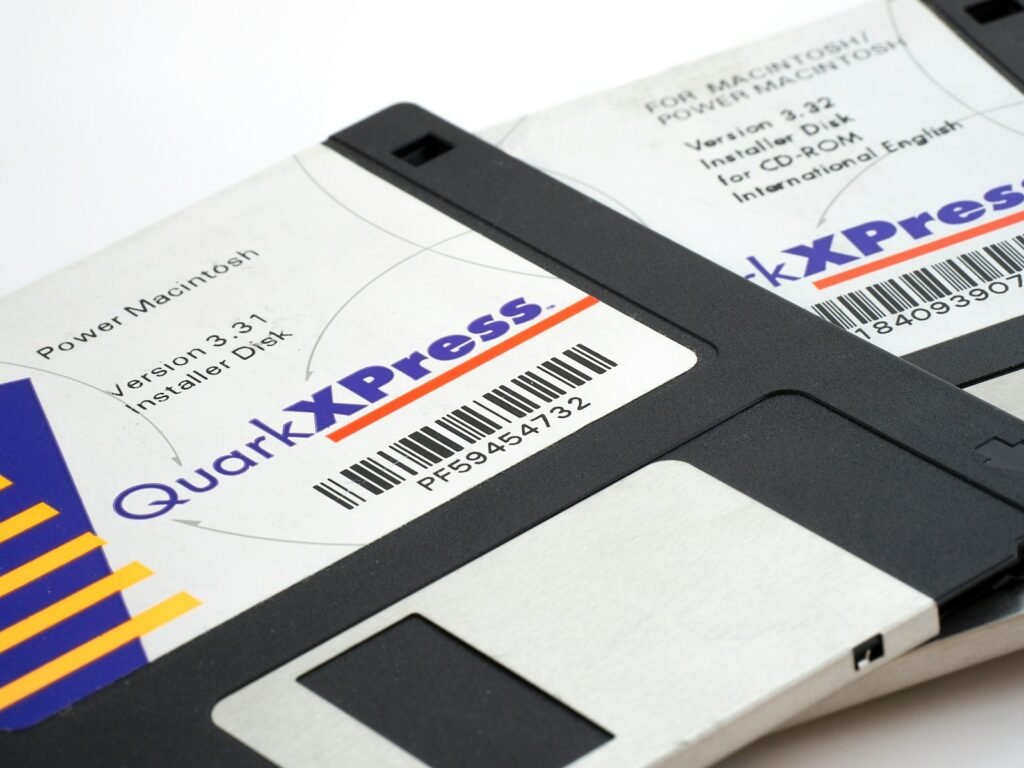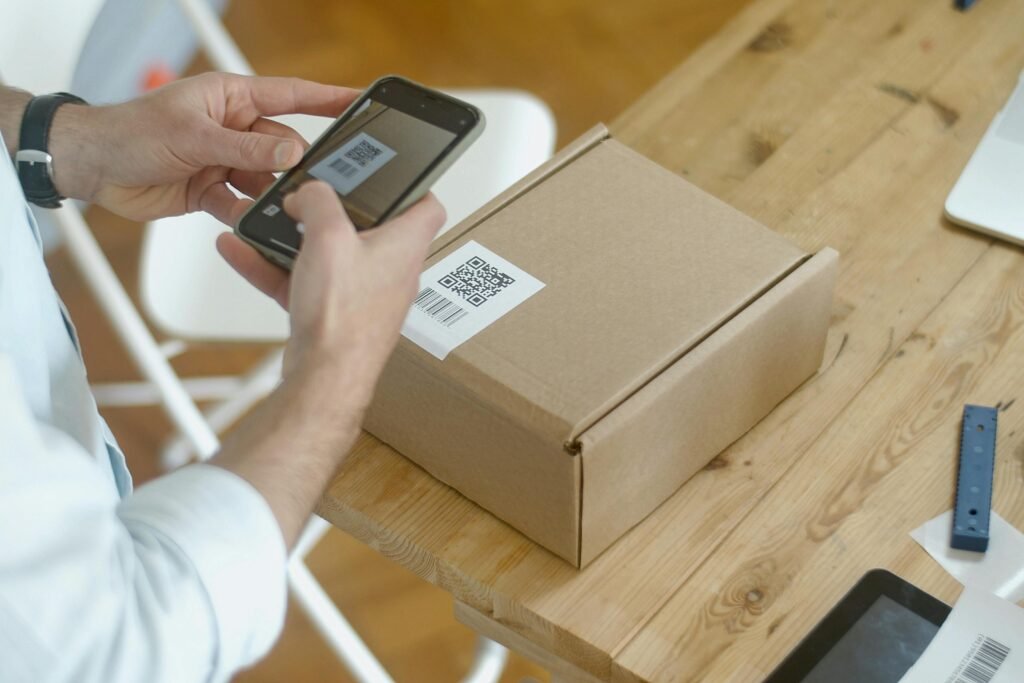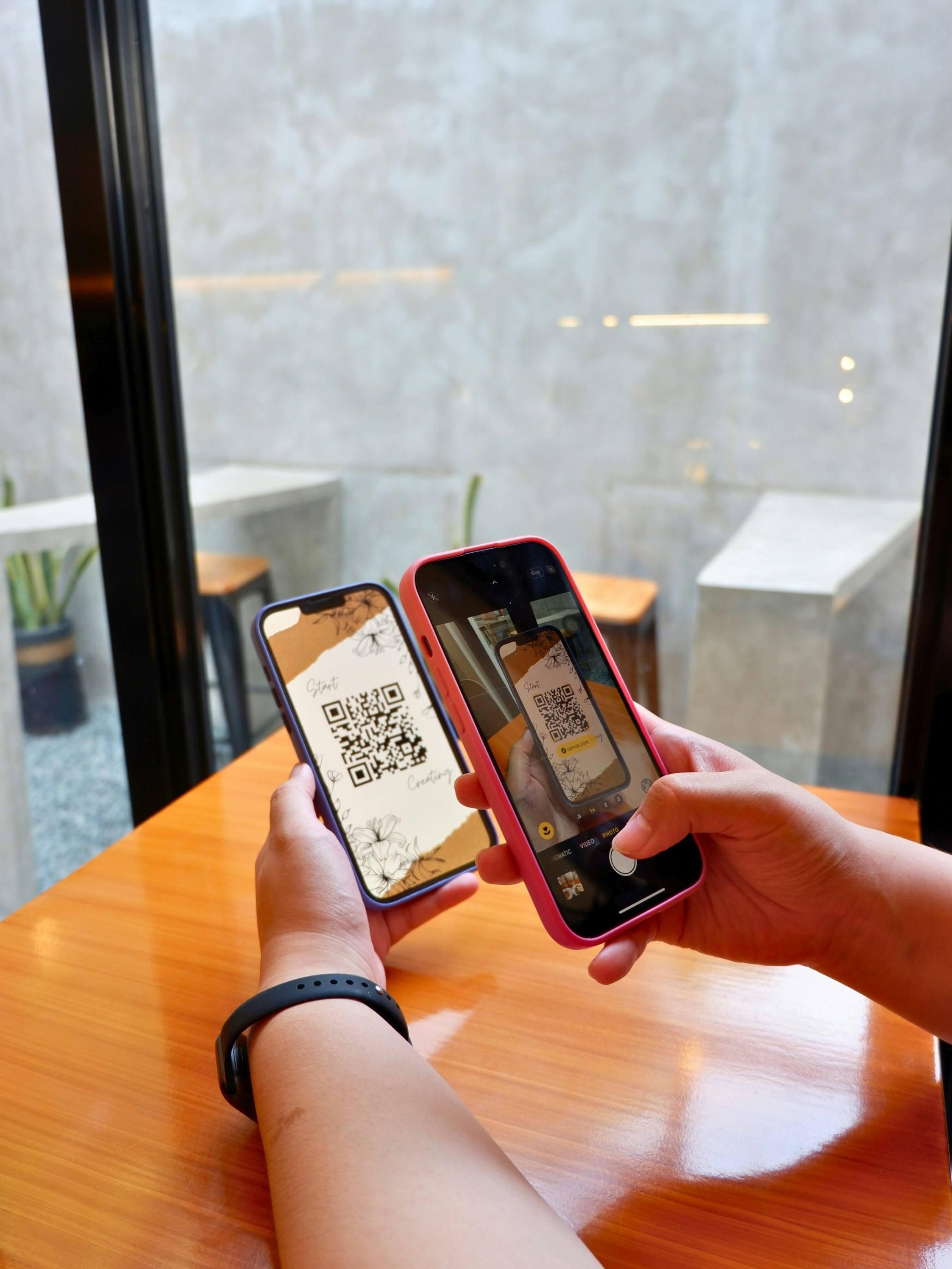Introduction to Barcodes
Barcodes are graphical representations of data designed to be scanned and interpreted by machines. Originating in the 1940s, the first barcode was developed to automate the checkout process in grocery stores, significantly improving efficiency. Since then, barcode technology has evolved, enabling a wide range of applications across various industries, from retail to healthcare.
Barcodes function by encoding information into a series of vertical bars and spaces of varying widths, which can be read by laser scanners or camera-based devices. This system allows for quick retrieval of product information, inventory management, and sales tracking. Their ability to facilitate automated data entry contributes to the accuracy and efficiency of numerous commercial processes.
There are several types of barcodes, each designed for specific applications. The most common type is the Universal Product Code (UPC), which is prominently used in retail environments for tracking items at the point of sale. Other prominent types include the European Article Number (EAN), which serves similar functions in Europe, and QR codes, which can store larger sets of information and are increasingly utilized in marketing and advertising.
Barcodes have not only streamlined inventory management and sales processes but have also contributed to improved data accuracy and reduced human error in transcribing product information. Businesses and consumers alike benefit from the efficiency that barcodes offer in facilitating transactions and managing stock levels. As barcode technology has become more ubiquitous, its global standardization has paved the way for a more interconnected commerce environment, ensuring that products can be tracked and managed uniformly across different regions.
The Technology Behind Barcodes
Barcodes represent a crucial component of modern product identification and tracking across various industries. They consist of a series of parallel lines or squares that encode information about a product—typically its price, manufacturer, and other key details. The most common types of barcodes include Universal Product Codes (UPCs), Quick Response (QR) codes, and various 2D barcodes, each serving distinct purposes and applications.
UPCs are primarily utilized in retail environments for rapid scanning at points of sale. These one-dimensional barcodes consist of 12 numerical digits that identify specific products, enabling efficient inventory management and pricing. The scanning of UPCs is performed using laser scanners that interpret the pattern of reflected light from the barcode, which corresponds to the stored numeric information.
In contrast, QR codes accommodate more complex data storage and are increasingly used in marketing and digital transactions. Unlike traditional barcodes, QR codes are two-dimensional, allowing them to store information both horizontally and vertically. This capacity enables the encoding of URLs, contact information, and more. Modern smartphones equipped with cameras can effortlessly scan QR codes and direct users to their linked destinations, thereby enhancing user experience and interaction.
The technology that supports barcode scanning relies on various devices and software that process barcode data. Handheld scanners, fixed-position scanners, and mobile devices equipped with barcode scanning applications are all capable of converting barcode images into readable data formats. This process involves capturing the barcode image, analyzing its patterns, and interpreting the encoded information. The widespread application of barcode technology facilitates accurate and efficient data collection, making it a foundational element in retail, logistics, and inventory management systems.
Global Standards for Barcodes
Barcode technology plays an integral role in inventory management, logistics, and retail, necessitating a framework of international standards to ensure its effective functionality across diverse sectors and regions. The primary organization responsible for the standardization of barcodes is GS1, a global non-profit organization that establishes, maintains, and promotes standards for supply chain management. GS1 is instrumental in ensuring that barcodes are universally interpretable, thus facilitating seamless transactions and data exchanges worldwide.
GS1’s work involves developing and managing the GS1 System of Standards, which includes the well-known Universal Product Code (UPC) and Global Trade Item Number (GTIN). These standards enable businesses to assign unique identifiers to products, allowing for accurate tracking and management of inventory. By establishing a standardized approach to barcodes, GS1 helps various industries, including retail, healthcare, and logistics, to ensure compatibility and interoperability across different systems and technologies.
In addition to GS1, other organizations and consortia, such as ISO (International Organization for Standardization) and ANSI (American National Standards Institute), contribute to the development of barcode standards. These entities collaborate to create and uphold specifications that align with both local and international requirements, ensuring that barcodes remain dynamic and adaptable to technological advancements. The active participation of governments, industry stakeholders, and technical experts further strengthens these standards, promoting widespread acceptance and integration of barcode technology.
Through effective global standardization, businesses can implement barcode systems that not only enhance operational efficiency but also facilitate international trade. Companies leveraging these universal barcode standards are better equipped to participate in a competitive market, streamline their supply chains, and satisfy consumer demand for transparency and accuracy in product identification.
The Universal Applicability of Barcodes
Barcodes have emerged as a fundamental element in many sectors, functioning as a transnational tool for product identification and tracking. Their design enables rapid and accurate data capture, making them essential for inventory management, sales transactions, and supply chain logistics across various industries. However, the question arises: are these codes truly universal across different markets and countries? To determine the universality of barcodes, it is crucial to analyze how they are implemented diversely yet consistently in various global contexts.
One notable case study is the retail industry, where barcodes are predominantly used to streamline checkout processes and improve inventory accuracy. Major retailers like Walmart and Tesco employ Universal Product Codes (UPCs) to ensure that products from different manufacturers can be scanned and recognized efficiently. This universal application assists in maintaining stock levels and enhances customer service, demonstrating the adaptability of barcodes in different retail environments.
Similarly, in the manufacturing sector, barcodes play a pivotal role in enhancing operational efficiency. For instance, companies like Ford and General Motors utilize barcodes for tracking parts throughout their assembly lines. By standardizing the identification process, these organizations can reduce errors and ensure a seamless workflow. Furthermore, the implementation of barcodes in logistics allows businesses to monitor shipments accurately, making them invaluable for global trade.
Despite these positive examples, barriers to universal applicability do exist, such as regional differences in technological infrastructure and variations in barcode formats. While the Global Trade Item Number (GTIN) provides a framework for barcode standardization, challenges remain in enforcing compliance across diverse markets. Overall, barcodes showcase a remarkable degree of universality, yet this comes with caveats reflecting the complexities inherent in global commerce.
Challenges to Universal Barcode Adoption
The potential for universal barcode adoption faces several significant challenges that vary across regions, economies, and industries. One major challenge arises from the existence of regional differences in barcode types. While the Universal Product Code (UPC) is prevalent in North America, other regions utilize different formats, such as the European Article Number (EAN) in Europe and the Japanese Article Number (JAN) in Japan. This divergence complicates efforts to standardize barcodes globally, as businesses often rely on the systems familiar to them, leading to inconsistencies in data management and inventory tracking.
Moreover, economic barriers present another obstacle to universal adoption. Many developing countries may lack the financial resources to implement advanced barcode systems or the infrastructure necessary for their effective use. This situation is exacerbated by the high costs associated with barcode technology, including equipment, software, and ongoing maintenance expenses. As a result, smaller businesses in these regions may struggle to adopt modern barcode solutions, perpetuating a cycle of limited access to global trade markets and hindering the potential for universal barcode implementation.
Technological disparities between countries and industries further complicate the challenge of universal barcode adoption. While some industries, such as retail and logistics, have rapidly integrated barcode systems into their operations, others, like agriculture and healthcare, may lag behind due to varying levels of technological readiness. Consequently, differing levels of expertise and access to technology create barriers to a uniform approach to barcode utilization, impacting the effectiveness of inventory management and data accuracy.
Addressing these challenges is crucial for fostering a more unified global approach to barcode technology, which can ultimately enhance efficiency and streamline operations across international markets.
Emerging Trends in Barcode Technology
As industries increasingly rely on barcode technology for efficient inventory management and data accuracy, several emerging trends are shaping the future of this essential tool. One significant advancement is mobile scanning. With the rise of smartphones equipped with high-resolution cameras, businesses are leveraging mobile devices to scan barcodes, thereby improving accessibility and reducing the need for dedicated barcode scanners. This transition allows for real-time data entry and enhances operational efficiency, making barcode systems more user-friendly and adaptable to various environments.
Another notable trend is the integration of barcode systems with the Internet of Things (IoT). IoT enhances the functionality of barcodes by allowing products to communicate with online platforms, providing real-time updates on inventory levels and location tracking. This convergence not only enables better supply chain management but also facilitates predictive analytics, helping businesses anticipate demand and streamline operations. As IoT devices become more ubiquitous, the interoperability of barcode technology with these systems will likely play a critical role in their universal adoption.
The shift towards more sophisticated coding methods also marks a significant evolution in barcode technology. Traditional one-dimensional barcodes are increasingly being complemented and replaced by two-dimensional codes, such as QR codes. These two-dimensional codes can store more information, enabling businesses to provide consumers with detailed product data, promotional offers, or even direct links to websites. The versatility of these codes enhances consumer engagement and provides insight into customer behaviors, further driving the demand for advanced barcode systems.
These emerging trends highlight a dynamic landscape in barcode technology, indicating a movement towards more accessible, integrated, and data-rich systems. As industries adapt to these advancements, the push for a standardized, universally accepted barcode system continues to gain momentum, fostering global collaboration and innovation.
Comparative Analysis: Barcodes vs. Alternatives
In the realm of identification technologies, barcodes have long been a staple due to their relatively simple design and widespread adoption. However, with the advancement of technology, alternatives such as Radio Frequency Identification (RFID) and Near Field Communication (NFC) have emerged, each with its unique strengths and weaknesses. Understanding these distinctions is crucial for businesses evaluating identification solutions.
One of the foremost advantages of barcodes lies in their universality; they are used globally in various industries, from retail to logistics. Barcodes are cost-effective and easy to implement, requiring only a scanner and basic software for reading. Their simplicity, however, comes at a cost: barcodes require a direct line of sight for scanning, limiting efficiency in high-speed or automated environments. Moreover, they can only encode a limited amount of data, which might not suffice for certain applications.
On the other hand, RFID technology offers a significant upgrade in terms of efficiency. RFID tags can be read at a distance and do not require direct line-of-sight, allowing for faster processing of items, particularly in inventory management. Furthermore, RFID can store more extensive data compared to traditional barcodes, which can enhance tracking and information retrieval. Despite these advantages, RFID systems tend to have higher implementation costs, including the expense of the tags and the necessary infrastructure for reading devices.
NFC, a subset of RFID, provides additional capabilities, particularly in mobile applications. It allows for two-way communication, enabling users to both read and write data. This is particularly beneficial in consumer interactions, such as contactless payments. However, like RFID, NFC may entail higher costs and requires compatible devices. Consequently, while alternatives to barcodes, such as RFID and NFC, offer certain efficiencies and capabilities, the decision to adopt these technologies should consider factors like cost, universality, and specific operational needs.
Future of Barcode Standardization
The future of barcode standardization is poised for significant evolution, largely driven by globalization, advancements in technology, and the increasing interconnectedness of markets. As trade continues to transcend borders, the demand for uniform barcode systems is likely to intensify. This demand arises from the need to facilitate seamless supply chains and improve inventory management across various sectors. The ongoing growth of e-commerce has further highlighted the necessity for efficient and consistent identification methods, reinforcing the relevance of universal barcodes.
Technological advancements, including the rise of artificial intelligence and the Internet of Things (IoT), are set to reshape how barcodes are utilized. AI can potentially enhance barcode scanning capabilities, allowing for quicker and more accurate data retrieval. Furthermore, IoT devices can integrate barcode technology into broader systems, enabling real-time tracking and improved operational efficiencies. This integration suggests a future where barcode technology not only serves as a mere identification tool but also as a critical driver of strategic decision-making.
Moreover, the potential emergence of global standards frameworks cannot be overlooked. Organizations such as the International Organization for Standardization (ISO) and GS1 are likely to play pivotal roles in establishing a comprehensive set of guidelines that cater to various industries on a global scale. These initiatives would lead to greater interoperability among different systems, enhancing the universality of barcode technology. As markets become increasingly interconnected, the importance of compatible barcode systems cannot be overstated. A universally accepted barcode standard would not only streamline operations but would also instill consumer confidence in a global marketplace.
In conclusion, the future of barcode standardization appears promising, driven by the forces of technological innovation and globalization. The potential for unified systems could significantly enhance efficiency and trust across diverse markets, shaping an era where barcode technology is genuinely universal.
Conclusion: The Road Ahead for Barcodes
Barcode technology has established itself as a fundamental component of modern commerce, facilitating efficient inventory management, transaction processing, and data tracking across industries. The preceding sections have explored the key aspects of barcode standardization, particularly the significance of Universal Product Codes (UPCs) and the Global Trade Item Number (GTIN). These systems allow for interoperability, enabling businesses worldwide to manage products with precision and reliability.
The drive towards universal barcode standardization is a vital element not only for enhancing operational efficiency but also for streamlining global trade. As commerce becomes increasingly globalized, having a common language in the form of universally recognized barcodes ensures that businesses, regardless of location, can communicate product information seamlessly. This interoperability is essential in reducing errors, improving inventory accuracy, and providing enhanced consumer experiences.
To further strengthen the case for barcode adoption worldwide, several steps can be undertaken. Firstly, educating businesses on the advantages of integrating standardized barcodes into their operations is crucial. This could involve training programs or workshops that outline the efficiency gains and cost reductions associated with using a uniform barcode system. Secondly, industry stakeholders must work collaboratively to advocate for guidelines and policies that promote barcode standardization across regions and sectors. This cooperation can lead to the establishment of best practices that enhance the overall effectiveness of barcode technology.
In summary, as we look toward the future of barcode technology, the pursuit of a universally accepted system remains paramount. The benefits of this standardization extend beyond individual businesses to the overall efficiency of global commerce, creating a more cohesive market environment. By fostering education and collaboration within the industry, we can pave the way for a more integrated and effective use of barcodes worldwide.
© barcodly.com- All rights reserved





